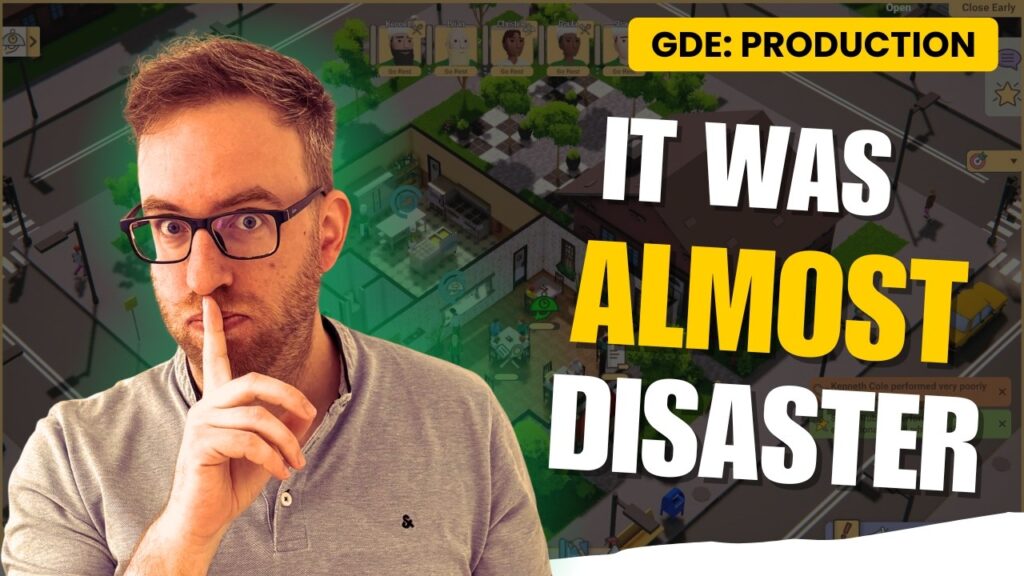Game design production is where great ideas either take shape, or crash and burn. You can have the best concept in the world, but without solid production, it’s just another half-finished prototype collecting dust on a hard drive.
A lot of folks think production is just meetings, Gantt charts, or endless Jira tickets. In reality, it’s the backbone of the whole game development process: the structure that keeps creativity moving forward instead of spinning in circles. Good production doesn’t kill ideas; it gives them the support they need to actually ship.
The goal of this article isn’t to drown you in jargon. It’s to share practical lessons from the trenches on how to streamline a game dev pipeline so your team can stay focused, flexible, and creative, without getting buried under scope creep or process bloat.
Understanding The Game Design Process
Production isn’t a side gig to “keep the artists and coders in line”; it holds the whole game design process together. Think of it as the framework that makes sure creative ideas don’t just float around, but actually turn into features players can touch.
Every team needs solid goals and milestones so everyone knows what they’re building toward. Without those deadlines, you drift into endless tinkering and “what if we added this, too?” territory. That’s how projects balloon out of control before they’ve even got a prototype running.
This is where the idea of MVP – minimum viable product – comes in. Strip your game to its essentials and ask: what’s the smallest version of this idea that still captures the fun? Build that first. Once the heart of the game is beating, you can layer on complexity.
Don’t just document the “what” (tasks, features, deadlines). Document the “why.” If the whole team understands why a system exists, they’ll make smarter decisions when things inevitably change. A spreadsheet can track tasks, but intent is what keeps a project aligned.
Building a Flexible Game Dev Pipeline
A good game dev pipeline isn’t about endless documents or fancy software. It’s about clarity. The best pipelines reduce friction, keep everyone on the same page and make sure energy is spent on building the game.
The mistake a lot of studios make is equating “pipeline” with “bureaucracy.” But the truth is, a pipeline should scale with the team, not weigh it down. A five-person indie doesn’t need the same Jira setup as a hundred-person AAA studio. Sometimes Trello boards and Discord check-ins will do the job just fine – as long as the scope stays under control.

If you want to learn more about what happens when communication falls apart and scope goes crazy, check this video out!
The essentials rarely change, though. You need version control so nobody nukes the project by accident. You need a way to track tasks so things don’t slip through the cracks. And you need regular syncs, whether that’s stand-ups or just a quick weekly check-in, so everyone knows what’s actually happening.
Above all, keep it simple. If the pipeline adds more steps than it removes, you’ve missed the point. A good system should feel invisible – it works in the background and lets the team focus on making the game.
Balancing Structure and Creativity
Production often lives between order and chaos. Too much structure, and you choke the life out of the creative process. Too little, and you end up with half-finished systems, missed deadlines and a frustrated team. The trick is finding that middle ground.
Structure should protect creativity, not replace it. Lock down the non-negotiables early – your core systems, your technical foundations, your engine constraints. Once those are set, give designers and artists space to experiment inside those boundaries.
For example, you might lock the combat system’s framework early, but let the team iterate freely on enemy design or player abilities within it. That way, the game still feels alive and experimental without risking a rebuild every few months.
Methodology should serve the team, not the other way around. Agile, Waterfall, hybrid: none of that matters if it doesn’t fit the people making the game. The right level of structure adapts to your team’s strengths while leaving breathing room for the creativity that makes games memorable.
Production is the Game’s Backbone
At its core, game design production isn’t about rigid systems or endless meetings – it’s about people and clarity. A strong production approach doesn’t strangle creativity, it should channel it. When the goals are clear, the pipeline is simple and the team feels supported – ideas have room to breathe without spiraling out of control.
Think of the game dev pipeline as a living system. It should grow, adapt and shift with the project, but always stay simple enough that everyone understands it. The best production teams aren’t remembered for their task boards – they’re remembered for making sure the game shipped.
In the end, production is the backbone of the game development process. Get it right, and you’ll build a framework where creativity thrives instead of drowns.


Leave a Reply